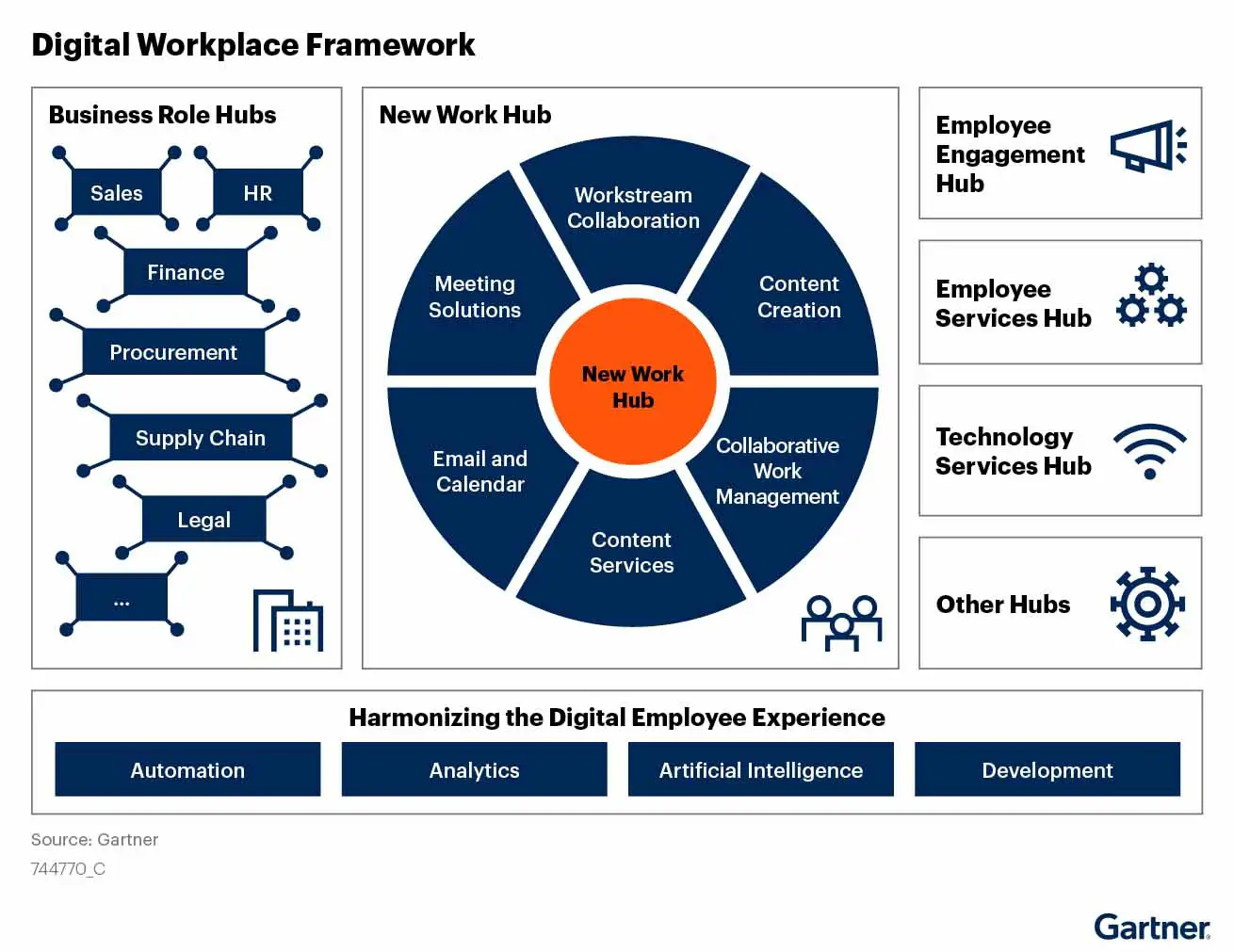Employee experience is often assumed to be synonymous with “employee happiness”.
While leaders should certainly be striving towards happiness, it is a far wider-reaching term than that and centering on happiness alone is going to make for a poor employee experience.
Let’s explore some of the steps you can take to create an excellent digital employee experience.
So, what is employee experience?
Recently the employee experience has been placed center stage as employers have realized that their employees are their greatest assets.
The employee experience can be defined as everything that an employee encounters during their tenure at an organization.
Why is it important?
A great employee experience can have an impact across many facets of the organization:
Employee engagement – this is vital for optimum staff productivity. Engaged workers are more likely to work harder and less likely to leave. Creating a great employee experience is one step to nurturing engagement.
Recruitment – potential candidates are going to be benchmarking your company on sites such as Glassdoor. Positive reviews from engaged employees who are raving about their work are going to be more attractive.
Retention – with the ongoing “great resignation” still a threat to talent retention, organizations need to work harder to ensure, for example, that onboarding processes and the introduction to the company have the desired effect of keeping staff engaged particularly in the first few months while they are still making up their mind.
Profitability – there is a strong business case for improving the employee experience. An analysis of over 250 global organizations found companies that scored highest on employee experience benchmarks have four times higher average profits, two times higher average revenues, and 40 percent lower turnover compared to those that didn’t.
What are the four key steps you can take?
Technology is a key component to a great employee experience. Much time can be wasted and friction caused when employees have a less than stellar digital experience.
Gartner* have developed a useful framework to illustrate the steps required to deliver a peak digital employee experience.
In summary the four steps are:
1. Align key partners
Avoid silos. For a successful digital employee experience to take place, leaders need to take a proactive stance and not assume that other functions involved in the employee experience process, such as HR, have it covered or have all the answers.
A key statistic from Gartner that offers a human perspective and should drive an outcome – “24% of technology industry employees consider digital technology to be in the top five employee value proposition (EVP) drivers of attraction.”
2. Develop Personas To Drive Successful Digital Workplace Strategy
Key to a successful digital strategy is getting to know your workforce. By building employee personas digital leaders can anticipate what employees need and care about from a digital perspective.
By centering the employee in their digital strategy, leaders can reduce potential sources of friction and deliver a tailored digital experience.

3. Identify Digital Friction and Support Diverse Employees With Your Personas
While a persona can help IT leaders develop empathy for their colleagues and a perspective outside the IT sphere, it is most powerful when the insights are leveraged as part of a wider strategy.
For example, greater efficiencies can be achieved when leaders recognize the business technologists within a department and work with them on digital transformation projects.
4. Deliver Exceptional Employee Experience Through a Digital Workplace Framework
The final step is to take your learnings from the previous three steps and use them to guide your digital workplace strategy.
The overall framework can be summarized in this diagram:

How hybrid workplace technology fits into this framework
Solutions such as the Rendezvous meeting room and desk booking software solutions play a key part of delivering a great digital experience and play a pivotal role in the “New Work Hub”.
They are tightly aligned with key aspects of the process:
Digital dexterity – the solutions improve digital dexterity in a number of ways. Integration with other aspects of the organization’s hardware and technology stack such as Outlook, digital signage, visitor management and access control creates a highly efficient and connected workplace.
Driving adoption – based around intuitive mobile-first platforms, our solutions are designed by our UI specialists to be easy for users to use. Innovations such as floorplan booking and colleague search mean they are the go to applications for collaborative working.
Reducing complexity – using cloud and app technology, our solutions are quick to deploy and scale as your needs grow. With an open API and established support for many leading platforms, creating the whole workplace ecosystem becomes a lot less daunting.
Delivering outcomes – our meeting room and desk booking software solutions offer tangible outcomes such as reduced expenditure and the features to drive a successful and adaptive hybrid working strategy.
Conclusion
Creating an ideal digital employee experience requires planning, an open approach and the willingness to embrace change.
Hybrid working is a key component of this employee experience. When evaluating a solution look for one that can appeal to all the key personas in the digital experience. A great deal of ground can be covered with a solution that is easy to use for staff adoption, that can be deployed quickly and delivers a great ROI.
We pride ourselves on delivering a great solution rapidly and seamlessly. Don’t just take our word for it – check out an unbiased Gartner review from one of our many happy clients.
For more actionable strategies on making the digital employee experience a success check out our Hybrid Working video.


